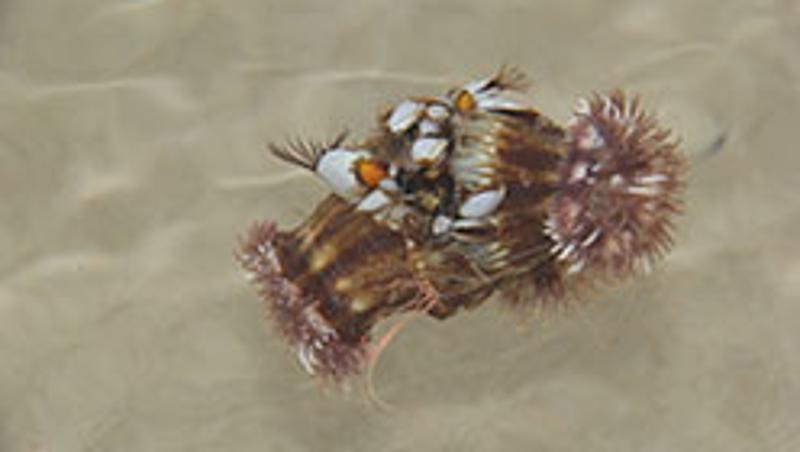
An ongoing study by a QUT PhD ecologist is finding future pumice producing volcanic eruptions across the Pacific are likely to help build coral reefs and add to Australia’s marine biodiversity, even as ocean temperatures warm.
Researcher Eleanor Velasquez has studied thousands of pieces of pumice washed up on Australia’s east and southern coasts both from the eruption of Tonga’s Home Reef in 2006 and the Havre submarine volcanic eruption in New Zealand in July 2012.
In one of the largest studies of its type in Australia, Ms Velasquez is finding marine life, such as coral, attached to the pumice is arriving not only in Australia’s tropics and sub-tropics, but some is arriving further south in the cool-temperate water of Tasmania as well.
“This would indicate that as the water temperature off Australia’s eastern coastline warms, marine life, such as coral, has the potential to be transported and potentially colonise further south than has been the case in the past,” Ms Velasquez said.
“This potentially provides for some good news at a time when the warming of Australia’s waters is having a negative impact on the Great Barrier Reef through coral bleaching.”
Ms Velasquez will present her research, ‘Pumice rafting: A hitchhiker's guide to marine biodiversity’, at the fourth Oceania Congress of the Society for Conservation Biology in Brisbane today.
She said while most marine life perished after reaching the colder waters of Tasmania, several species of mollusc previously not documented from Tasmania were found on the pumice washed up there.
“We are finding evidence that pumice rafts, which are formed via the eruption of underwater volcanoes which produce trillions of pumice stones are enabling marine animals and plants to travel vast distances across the Pacific and add to Australia’s marine biodiversity,” Ms Velasquez said.
“These submarine volcanic eruptions have been occurring every five to 10 years over the last 200 years at least and we expect this to remain the case in the future.”
We tested one of the oldest theories in ecology. The Theory of Island Biogeography and predicted that larger and older pumice stones would attract a greater volume of plant and animal life, and our study is proving this to be the case.
Ms Velasquez’s supervisor Associate Professor Jennifer Firn described the project as one of the first of its kind to find that marine plant and animal species hitching rides on pumice rafts across the Pacific, are arriving further south along the Australian coast than previously known.
Ms Velasquez said by investigating the biodiversity of animal life attached to pumice in tropical, sub-tropical and temperate marine zones, she aimed to gain further understanding of the types of marine animals and plants likely to make their way to Australia in the future.
“I am passionate about marine biology and, in particular, the things we can learn from pumice. My intention is for these results to assist in the protection of shallow marine reserves.”
Details of Eleanor Velasquez’s Presentation:
Session name: Population dynamics/landscape ecology
Date: July 8, 2016; Time: 14:55
Location: P8 Plaza Level, Brisbane Convention and Exhibition Centre
Fresh Science http://freshscience.org.au/events/south-queensland
Ms Velasquez’s research has also been nominated for a national Fresh Science award.
Media contact: Rose Trapnell, QUT media team leader, 07 3138 2361 or 0407 585 901 rose.trapnell@qut.edu.au


